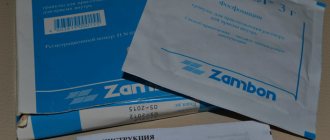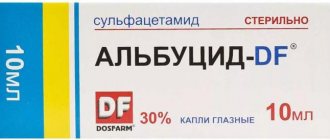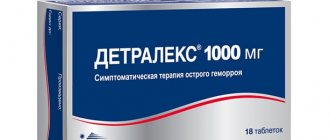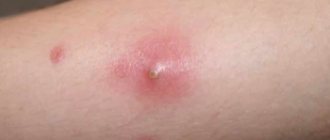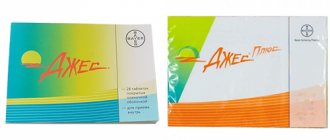January 27, 2016
You can probably name a lot of words that differ from each other by just one letter, but at the same time express completely different meanings. These include the words “probiotics” and “prebiotics”. We often hear that this or that product contains these essential elements for health. But do we always ask ourselves what kind of supplements are there - probiotics or prebiotics, and what is the difference? But it exists, and it’s JUST HUGE.
What is intestinal microflora
Many processes in the human body are regulated by beneficial bacteria. They help digest food and absorb nutrients from it, support the immune system and participate in metabolism. With the help of these microorganisms, most of the vitamins necessary for human life are produced. They are located in the intestine, which is often also a haven for pathogenic bacteria.
The balance between microorganisms in the human body is called microflora. If it is disrupted, the beneficial bacteria cannot do their job? and various health problems arise. Then a person faces an acute question: intestinal microflora - restoration. There are different drugs for this, but first you need to understand the causes of this condition, which is called dysbiosis.
Gastrointestinal microflora: composition and functions
Microflora in a normal state is called normal flora. It is a combination of populations of various microbes living in antagonistic symbiosis with the carrier, microorganisms, the main function of which is the formation and constant maintenance of the human body’s resistance to diseases, preventing and avoiding the risk of colonization of internal organs by pathogenic bacteria. Microflora maintains biochemical, immunological, metabolic balance necessary for health.
Types of microorganisms living in the intestines
Microflora is also called intestinal microbiota or microbiome. The largest part of the microbiome is concentrated in the large intestine, especially in the distal part.
On a note! Up to 10 intestinal viruses may be present in the large intestine.
Microorganisms populate the small intestine in smaller numbers (except for the sterile proximal section); acid-fast lactobacilli and bifidobacteria are present in the stomach in small quantities due to the aggressive environment. There is no microflora in the duodenum due to the presence of digestive enzymes that aggressively affect microorganisms.
Main functions of intestinal microflora
Table. Groups of microorganisms that populate the large intestine
| Group | Kinds |
| Basic/obligate (up to 90-95%) | Bacteroides, bifido-, lacto- and propionic acid bacteria. |
| Related/Optional (up to 5%) | Enterococci, clostridia, eubacteria, E. coli strains, pseudomonas. |
| Residual/transient (ideally up to 1%) | Proteus, staphylococci, fungi of the genus Candida, protozoan viruses. There may be species with a high aggressive potential that become more active and increase the population, subject to a decrease in the protective functions of the main group of microorganisms of the microbiota. |
On a note! In an adult, the weight of microflora can be up to two and a half kilograms. The number of microorganisms is up to 1014 CFU/g.
Why is the intestinal microflora disrupted?
Most often this happens for the following reasons:
- due to taking certain medications, especially antibiotics, which destroy any bacteria, even beneficial ones;
- due to poor nutrition, non-compliance with food intake, addiction to fast food and snacks on the go;
- due to reduced immunity, especially against the background of infectious and inflammatory diseases or chronic diseases;
- from disruption of the gastrointestinal tract due to surgery, poisoning or disease: gastritis, ulcers and others;
- Stress, a sedentary lifestyle and bad habits can also cause disruption of the intestinal microflora.
Indications for taking medications
Modern pharmacy cannot boast of producing completely safe medications that have no contraindications. Therefore, any medicine must be prescribed strictly according to a doctor's prescription. For internal use, a certain dosage of the drug is prescribed, taking into account the condition and individual characteristics of a person’s health. Self-medication is strictly prohibited.
Medicines for the intestines are presented in the following range:
- antidiarrheals and laxatives;
- antibacterial and anti-inflammatory;
- restoring intestinal microflora;
- antacids and enzymes;
- antispasmodics and enterosorbents;
- prophylactic agents.
What symptoms are accompanied by this condition?
When intestinal microflora is disturbed, the following are most often observed:
- bowel disorder - constipation or diarrhea;
- flatulence, heartburn, bloating, increased gas formation;
- stomach ache;
- smell from the mouth;
- loss of appetite, deterioration in performance;
- decreased immunity;
- in advanced cases, disturbances in heart rhythm and deviations in the functioning of other organs are observed.
Intestinal microflora: restoration
Preparations containing live bacteria and a medium for their reproduction are the most common means of treating this disease. But they should be prescribed by a doctor, since complex therapy gives a greater effect. There are preparations in the form of tablets or capsules, syrup or powder for preparing a suspension. But it is believed that when passing through the stomach, some of the microorganisms die, so it would be more effective to use such products in the form of microenemas or suppositories.
You can use folk remedies to restore microflora. For example, a mixture of dried apricots and prunes with honey, decoctions or extracts of St. John's wort, calendula, yarrow, eucalyptus or plantain. It is useful to eat lingonberries, garlic and grated sour apples.
A mandatory stage of treatment should be a nutritious diet, excluding fatty, spicy and canned foods, fast food and soda. It is very beneficial for the intestinal microflora to consume fermented milk products. Moreover, they must be natural, and you need to drink them at least half a liter a day.
In some cases, antibacterial drugs can be used to destroy highly multiplied pathogenic microflora: Penicillin, Tetracycline, Cephalosporin or Metronidazole. But probiotics must be taken together with them.
Types of drugs for the treatment of dysbiosis
1. Probiotics are medications containing live bifidobacteria or lactobacilli. They can be a single drug, which contains only one bacterium, or a complex product for colonizing the intestines with all beneficial microorganisms. These include “Linex”, “Bifidumbacterin”, “Acipol” and others.
2. There are also medications that help the body produce its own bacteria - prebiotics. Most often they contain lactulose, which is a nutrient medium for them. These are “Lactusan”, “Normaze”, “Duphalac” and others.
3. But the most effective medications for restoring intestinal microflora are symbiotics. They contain both living bacteria and substances for their growth. These include “Biovestin Lacto”, “Bifidobak” and others.
Persistent Bacillus subtilis
Fortunately, there are many types of probiotic organisms, and some of them can do this. For example, spore microorganisms Bacillus Subtilis are insensitive to many factors that are harmful to other strains. These are powerful modern probiotics, the best today for use in industrial animal feed.
Blitz dry dog food, which has no analogues on the Russian market, is enriched with these probiotics, along with prebiotics.
This is not only a complete food, prepared using modern technologies and containing all the necessary nutrients and microelements. With the addition of the probiotic Bacillus Subtilis, Blitz maintains a healthy balance of your dog's gut microflora, giving him health and longevity.
Characteristics of probiotics
These are the most popular drugs for restoring intestinal microflora. The list of probiotics is long, but they all have their own characteristics. Therefore, it is better to choose a medicine after consulting a doctor. Probiotics are natural remedies and contain bacteria that exist in the human intestine. These medications are safe and do not cause any side effects. They are used for the complex treatment of chronic and infectious diseases of the gastrointestinal tract and in cases where it is necessary to restore the intestinal microflora after antibiotics. Drugs in this group can be divided into three types:
— Medicines containing bifidobacteria: “Bifidumbacterin”, “Bifiform” and others. These microorganisms are the most common in the human intestine. They are the ones who are able to suppress the activity of pathogenic bacteria. Therefore, such drugs are effective against salmonellosis, dysentery, and allergic diseases.
— Preparations with live lactobacilli: “Lactobacterin”, “Biobakton”, “Acilact” and others. They are good to use during antibiotic treatment to protect the intestinal microflora. But since they contain only one type of microorganism, they do not help against complex dysbacteriosis.
— Multicomponent products: “Linex”, “Acipol”, “Bifiliz”, “Florin Forte”, “Bifikol” and others. They contain additives that enhance the effect of bacteria.
In what cases are probiotics and prebiotics prescribed?
Preparations based on probiotics are used in the treatment of immune diseases, vitamin deficiencies, acute respiratory viral infections and influenza, dysbacteriosis, parasitic infestations, and intoxication of the body. Also, bifido- and lactose-containing products are often prescribed to restore microflora disturbed due to long-term use of antibiotics and other drugs that negatively affect the functioning of the intestines and immune system.
Since prebiotics enhance the effect of probiotic drugs, they are often prescribed in combination. Dietary supplements and medications with prebiotics are rarely used as independent therapeutic agents. Most often they are used for mild forms of diarrhea, constipation and flatulence as auxiliary drugs. In baby food, prebiotics are used for comfortable digestion, regulating stool and preventing food allergic reactions.
1+
Back to list Previous article Next article
The best lactulose-based medications
The effect of such drugs is based on the property of this substance to be broken down in the intestines into low molecular weight organic acids. They suppress the activity of pathogenic microorganisms and thereby enable beneficial bacteria to grow normally. Lactulose is contained in Duphalac, Portalac, Normaze and some others. They cause almost no side effects, but there are still some restrictions on their use. It is not recommended to use such drugs for patients with diabetes, those who have lactose intolerance or intestinal bleeding.
Complex medicines
Many people believe that the best drug for restoring intestinal microflora is Hilak Forte. In addition to lactobacilli, it contains lactic and other organic acids, which have a positive effect on damaged epithelial cells.
They also restore acidity in the gastrointestinal tract. These drops can be used at any age; they are well tolerated and effectively relieve the symptoms of dysbiosis: abdominal pain, flatulence and stool upset. Laminolact is also a popular drug. It comes in the form of delicious dragees. In addition to beneficial bacteria, they contain vegetable protein, oats and seaweed, which serve as a nutrient medium for the growth of microorganisms.
Restoration of microflora in children
A child’s intestines are completely populated with beneficial bacteria only by age 11. Therefore, dysbiosis is much more common among them. Stress, unfamiliar food, infectious diseases - all this causes the death of beneficial microorganisms and the proliferation of pathogenic ones. Restoration of intestinal microflora after antibiotics is especially often required. Not all medications are suitable for children, so treatment should only be prescribed by a doctor. And it is not recommended to treat a child who is fed breast milk at all for dysbiosis. The main thing is for the mother to eat right and not give the baby any more food. But in difficult cases and with artificial feeding, special drugs are still required to restore the intestinal microflora. Not all of them are suitable for children:
— “Linex” in powder form can be given to babies from birth. It is added to water or breast milk. But the drug contains lactose, so it cannot be given to everyone.
— “Primadophilus” is also a powder diluted in any liquid. You just need to follow the dosage recommended by your doctor.
— The drug “Hilak Forte” is available in drops. Its peculiarity is that it is incompatible with dairy products.
— “Bifidumbacterin” is taken with meals. This drug in powder form can also be dissolved in any liquid.
If a child suffers from colic, stool disorders and bloating, does not gain weight well and often cries, he definitely needs to restore the intestinal microflora.
Drugs: reviews of the most common ones
Recently, intestinal microflora disorders have become increasingly common. And not all patients consult a doctor about this. Taking medications on the advice of friends or pharmacists, they often do not get the desired result. But there are also remedies that everyone likes, and doctors prescribe them most often. These are Hilak Forte and Linex. They have no contraindications and are well tolerated. It is convenient to drink these drugs, especially Linex capsules. And many people like the sour taste of “Hilaka Forte”. What drugs for restoring intestinal microflora are not very suitable for patients? Basically, these are those that need to be stored in the refrigerator and diluted with water. This is quite inconvenient, although this form is more acceptable for small children. But in any case, you should take medications only as prescribed by your doctor.
How to choose an effective and inexpensive drug
Pharmaceutical companies offer a wide range of probiotic drugs that can prevent the effects of antibacterial treatment. Each patient, depending on the severity of the manifestations of dysbiosis, the intensity and duration of therapy, and financial capabilities, can choose the appropriate medicine.
The effectiveness of the drug is determined by the number of active ingredients, the quality of raw materials and compliance with technical production standards.
Table of drugs with prices:
| A drug | Compound | Action | Manufacturer | Price |
| Acipol | A mixture of acid-loving lactobacilli and kefir grains | Suppression of pathogens and fungi | "Lecco" (Russia) | From 400 rub. |
| Bifiform | Bifidobacteria, enterococci | Probiotic, antidiarrheal effect | FERROSAN (Denmark) | From 496 rub. |
| Linex | Dried lacto-, bifidobacteria, lactic acid enterococcus | Complete Probiotic | LEK PHARMACEUTICALS (Slovenia) | From 321 rub. |
| Normoflorin B or Normoflorin L | Live bifidobacteria or lactobacilli, amino acids, peptides, vitamins, lysozyme, organic acids, trace elements | Probiotic, by restoring the balance of bifidobacteria or lactobacilli. Prebiotic | Bifilux (Russia) | From 209 rub. |
| Hilak forte | Organic matter as a result of the life of lactobacilli, E. coli and fecal streptococcus | Prebiotic | Ratiopharm (Germany) | From 273 RUR |
Price is not an indicator of the effectiveness of the drug. Budget analogues have proven themselves well in the prevention of antibiotic-associated conditions and the treatment of mild forms of microbial imbalance.
Table of cheap analogues:
| A drug | Compound | Manufacturer | Price |
| Acylact | Lactobacillus acidophilus | Lanafarm (Russia) | From 78 RUR |
| Bifidumbacterin | Dried mass of bifidobacteria | Vitapharma (Russia) | From 82 RUR |
| Lactobacterin B | Dried suspension of lactobacilli | Microgen (Russia) | From 176 rub. |
Please note that experts recommend starting treatment with antibiotics on the first day of treatment. This will help maintain the microbial balance of the body, and therefore ensure good health in the future.





